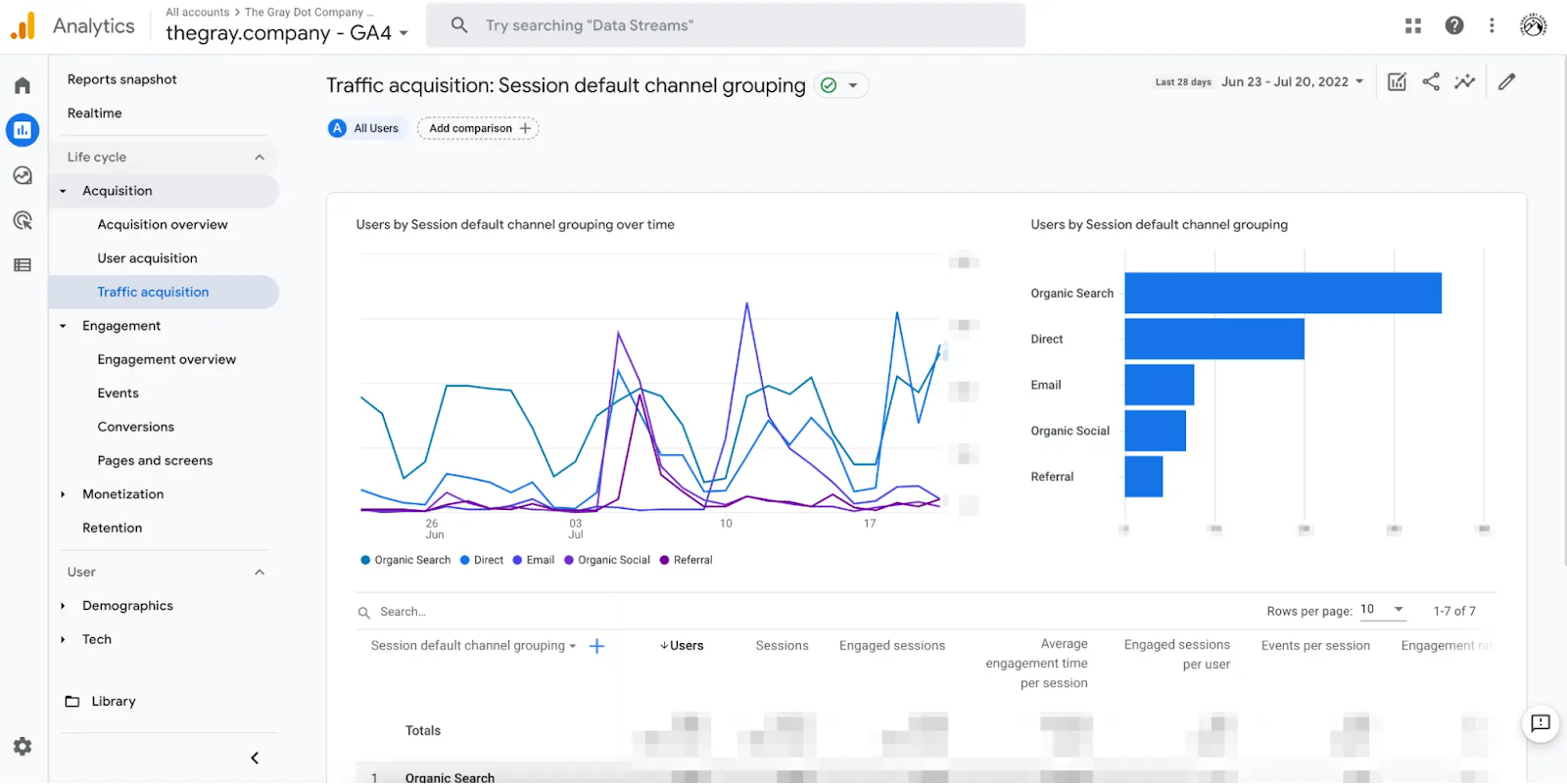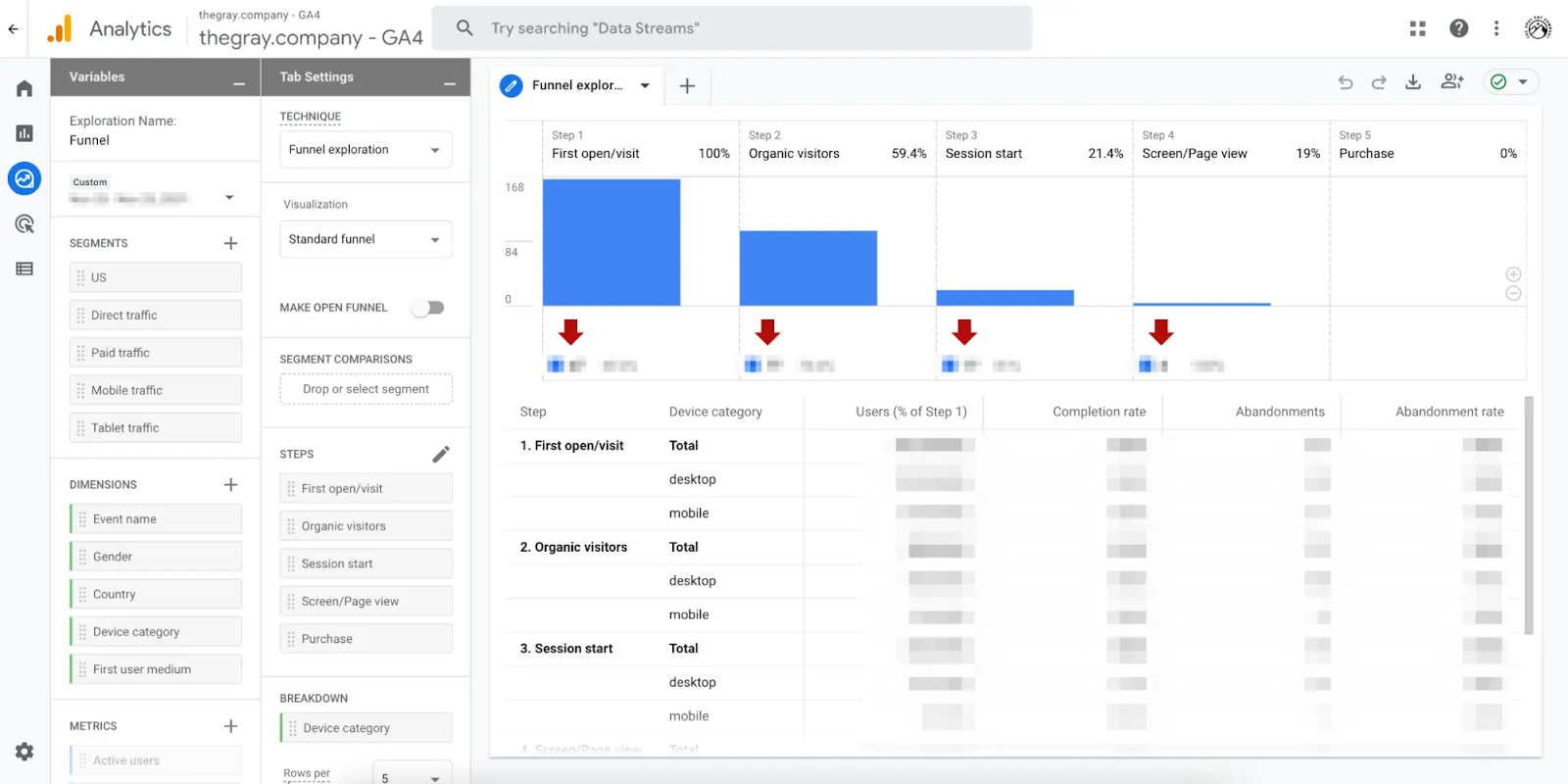
In July 2023, Google will officially end Google Universal Analytics (UA). In 2013, Universal Analytics became the industry standard for tracking eCommerce conversions. Even though Universal Analytics offers comprehensive features, modern security protocols exclude most users from providing the requested information through this traditional tracking model.
Universal Analytics (UA) is a version of Google Analytics that sets a new standard for collecting and organizing user data. For your eCommerce business, Google Universal Analytics is vital since it provides detailed statistics on your customers, their interests, and how they interact with your store. You can make data-informed decisions about improving your eCommerce store when you take advantage of the wealth of information available from Google Universal Analytics. Instead of acting on instinct, you can validate any theories about your business.
The fact that UA is an important part of eCommerce has led Google to announce the GA4 (Google Analytics 4). The UA platform no longer meets the technical requirements for current analytics standards, which is why Google is ending Google Universal Analytics.
E-commerce introduction to GA4: What’s new?
Recently, Google announced the discontinuation of Google Universal Analytics support and the need to install GA4: check this link from Google: https://support.google.com/analytics/answer/11583528?hl=en
It’s safe to say that Google Analytics 4, the next version of Universal Analytics, will change how companies use Machine Learning and Artificial Intelligence Systems and how they gather, process, and analyze data.
With Google Analytics 4, the user interface has been greatly improved. You can now configure your events to create targeted conversion events directly from the user interface, which makes it easier to create your events. Furthermore, with this improved user experience, you can change your events without getting into the site code.
Among the features included in GA4 E-Commerce’s latest update are enhanced Predictive Insights, Deep Integration with Google Ads, Advanced-Data Controls, and Cross-Platform Measurement.
The key features of GA4 E-Commerce are:
- Reporting based on customer lifecycles.
- Tracking events without codes.
- A new generation of AI-powered insights and predictions.
- Deeper integration of audiences is possible with Google Ads.
- Granular control over user data.
- A cookie-less future for analytics.
What makes GA4 different from UA?
1. Reporting interface reimagined
A4’s reporting interface is the most noticeable difference between Google Universal Analytics and GA4.
This is because some metrics, views, and reports in Google Universal Analytics have either been removed or replaced in GA4.
The new GA4 interface is very similar to Google Data Studio in how analytics are presented. If you are familiar with Data Studio, navigating GA4 may be straightforward.

2. Hits and Events
The main difference between Google Analytics 4 properties and UA is that Google Analytics has a Category, Action, and Label for each event. In contrast, Google Analytics 4 properties consider every “hit“ as an event.
Google Analytics 4 does not distinguish between types of hits. For instance, the page_view event is triggered when someone views a page of your website. However, it does not distinguish between categories, actions, or labels.
As a result, Google Analytics 4 reports do not display Category, Action, or Label information about events.
3. Changing terminology
In the new interface, you’ll notice some changes to Google’s terminology. “Behavior“ stands for Engagement, “Segments“ now stands for Comparisons, and “Channels“ stands for User Acquisition. The “Pages and Screens“ report has been renamed “Pages and Screens.”

Google has reorganized the “Audience“ reports, and the information that used to be in the “Audience“ reports has been moved to other sections such as “User“ and “Acquisition.“
It won’t be easy to navigate GA4, especially for those familiar with Google Universal Analytics.
4. Sessions / Visits
The session is a short period during which your website visitors interact with you.
Usually, sessions end after 30 minutes of no activity or after another qualifying event occurs in Google Universal Analytics. A session can contain multiple page views, events, social media interactions, and eCommerce transactions.
In Google Analytics 4, session metrics are automatically collected from the session_start event. For example, a session’s duration is determined by the time between the first and last events.
There is a difference in how sessions are calculated between UA and GA4 so the numbers will differ.
Google Universal Analytics starts a new session for every new campaign, even if there is no activity. However, Google Analytics 4 does not start a new session for every new campaign, which can lead to lower session counts.
5. User ID or user-level tracking
To track the interactions of your app or website on different devices, you need to generate your unique identifiers, assign them to your users, and send your data to Google Universal Analytics with the identifiers.
A single journey will be generated for each user using all the data. Unlike Google Universal Analytics, Google Analytics 4 property provides this automatically without requiring a separate UserID.
Your app and website versions should pass the same type of User ID (string or integer) if you want to track users who utilize your app and website.
6. Pageviews and Screenviews
Pageviews are tracked as page_view events in Google Universal Analytics, which are generated automatically via the gtag configuration command or the Google Analytics 4 Configuration tag.
Comparing Google Universal Analytics and Google Analytics pageviews is not a good idea since they are calculated differently, and the numbers will differ.
In contrast, Google Analytics 4 is available on all platforms and does not rely on cookies to track users’ behavior.
7. Tracking without cookies
Views, custom metrics, and content groups will no longer be supported in GA4. If you rely on these features, transitioning to GA4 will likely involve filling some measurement gaps. If the transition becomes too painful and compromising, there are alternatives to consider.
In contrast, Google Analytics 4 is available on all platforms and does not rely on cookies to track users’ behavior.
8. Removed functionality
Views, custom metrics, and content groups will no longer be supported in GA4. If you rely on these features, transitioning to GA4 will likely involve filling some measurement gaps. If the transition becomes too painful and compromising, there are alternatives to consider.
Moving from UA to GA4 is not an easy task. This will be a challenging change between adapting to GA4’s new reporting and measurement models and learning its revised terminology and labeling.
In light of this, it is now imperative that you verify whether the results of all this work are what you need.
Is GA4 worth migrating to?
GA4 has an entirely new technical architecture. This signals the end of the traditional web analytics we’ve all grown accustomed to from Web 2.0.
- You must act swiftly if interested in GA4 reporting Year-over-Year traffic change next year.
- You won’t get data on those custom measures if you don’t track them today. You should start tracking them in GA4 as soon as possible.
- Google Universal Analytics will no longer report data after July 2023.
Moreover, here is what this means for ecommerce stores:
1. You will not be able to move your data from GA to GA4
2. In 2023, you won’t be able to make a YoY comparison against 2022 or before
This is why Shopify stores are rushing to GA4 before the festive season.
Advantages of GA4
- Integrated with Google’s existing ecosystem (Google Tag Manager, Ads, Search Console) and the one to come.
- Google unifies sessions by user ID, which is excellent. However, Google now unifies web and app experiences, as they share the same metrics.
- Analytical integration of artificial intelligence through native connection with Big Query.
- Measuring by default includes outbound links, video views, scrolling, searches, and downloads.
- In the new GA4 version, only websites with a large amount of traffic will need the paid version.
How does this affect you and your business?
Google Universal Analytics users (nearly everyone) will need to start planning how and where to measure the performance of their website in the future.
In addition to saving your data for posterity, you’ll also want to prepare for YoY reporting, given that if you don’t do anything to preserve it, you won’t be able to use it in the future.
When should you move from UA to GA4?
You’ll need to prepare as soon as possible if you and your team intend to switch to GA4 in the summer of 2023. If you choose to do so, you’ll need to prepare in the following areas:
- Choosing the right measurement solution,
- Keeping historical data safe and secure
- The solution could be implemented before summer 2022, at the latest, before the end of the year.
Until 2023, Google will not remove or delete your Google data. However, if you want to preserve your ability to do YoY reporting, you should take action sooner rather than later.
You can now export any Google Universal Analytics report using the Export function within the Google Universal Analytics interface. However, only GA360 users have seamless export capabilities for their GA reports.
Is it possible to move UA data to GA4?
Data from offline sources can be imported into Google Analytics 4 using product metadata, user IDs, client IDs, or offline events. Since GA4 is event-based, you can import pretty much any data that will help you customize your reports.
Efforts involved in moving to GA4
Finish setting up your Google Analytics 4 property today to take advantage of its measurement continuity, automated insights, and easy activation to improve marketing ROI.
- Get started, create a GA4 and launch it
- Create data streams,
- Enable data collection,
- Activate google signals,
- Link to Google Ads,
- Finish migrating and mapping universal analytics custom events to GA4
- Migrate universal analytics goals and conversions to GA4
- Validate and bit to conversions in Google Ads
- Migrater audiences
- Migrate ecommerce measurement
- Add users
Moving forward…
A business’s success in the E-Commerce industry can only be measured if growth is happening or if additional measures need to be taken to ensure long-term success.
GA4 emphasizes user behavior more, helping the business owners do more user journey-centric data crunching and allowing their strategy to be more conversion-centric.
The GA4 property is designed to meet the needs of the future of measurement:
- The app and website data are collected to gain a better understanding of the customer journey
- Instead of using session-based data, it uses event-based data
- Provides privacy controls, such as cookie-less measurement and behavioral and conversion modeling
- With predictive capabilities, complex models are not needed.
- Integrating your website or app directly with media platforms helps drive conversions.
With the phase-out of Google Universal Analytics, there are many things to get used to with Google Analytics 4. We think it’s a good thing, and those using the platform will grow to love it just as they do Google Universal Analytics. In advance of the actual sunset date of UA, we recommend getting GA4 set up and running.
If you have an ecommerce website and need help growing it upmarket, we optimize your marketing actions for positive results.